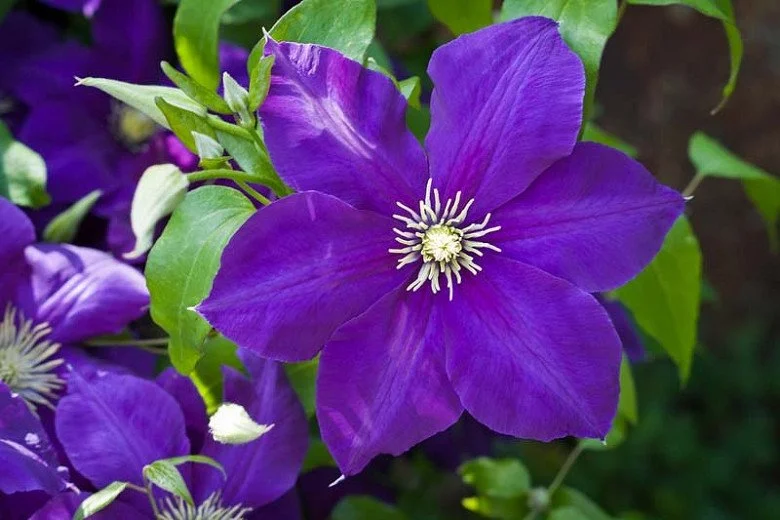Winter Pruning Guide for Healthy Clematis
As winter sets in, it's the perfect time to give your clematis its annual pruning. Pruning most Clematis in winter is a crucial step for ensuring vibrant blooms and robust growth come spring and summer. Your Clematis can go from a tangled mess to the queen of the garden with the right pruning method. Most people don’t realize there are 3 types of Clematis in regards to pruning methods. Which types of Clematis do you have? You can find out by looking up the name but if you don’t have the name you can tell by the season it blooms in. Keep reading to find out more….
1. Why Winter Pruning?
Winter pruning helps Clematis plants maintain shape, remove dead or diseased wood, and stimulate new growth. It's an essential part of their yearly care routine. This is also a good time to train your Clematis to grow where you want it to grow and check the support structures. You can grow Clematis on a trellis alone but these vines grow best with other shrubs like roses or lilacs. Luckily you also prune roses this time of year so you can tackle both at once if they are growing together in your garden!
2. Tools of the Trade:
Before you start, gather your pruning tools: sharp pruning shears, gloves, disinfectant for shears and plant tie. Clean tools prevent the spread of diseases between plants.
3. Identifying Clematis Types
Clematis plants fall into three main pruning groups: Group 1 (spring bloomers), Group 2 (summer bloomers), and Group 3 (late-season bloomers). Knowing your Clematis type guides your pruning approach.
4. Group 1 Pruning: Spring Bloomers
For Clematis in Group 1, which blooms in spring, lightly prune after flowering. Remove dead or weak stems, allowing the plant's structure to shine. This ensures a tidy appearance without sacrificing future blooms.
5. Group 2 Pruning: Summer Bloomers
Group 2 Clematis, flowering in summer, benefits from a moderate winter pruning. Trim damaged or dead growth and shape the plant as desired. Be cautious not to cut too much; this group blooms on old and new wood. I usually prune these types to about 4’ and tie them back to their supports or shrubs.
6. Group 3 Pruning: Late Bloomers
Late-season bloomers in Group 3 can be pruned more drastically in winter. Cut back almost to the ground, removing weak or dead stems. Yes it seems drastic but trust me you will be rewarded with fabulous blooms come late spring,summer! This encourages vigorous new growth and abundant blooms.
7. General Tips
- Always prune at a 45-degree angle just above a set of healthy buds.
- Remove any tangled or overcrowded stems to improve air circulation. Be very careful when pruning stems you want to keep. Take time to trace where they are coming from so you don’t cut a healthy stem by accident. Clematis almost look dead when they are dormant. You can light scrape the side of a stem to look for green inside so you know what is alive and what is not.
- Mulch around the base to protect against winter temperature fluctuations. Mulch can be thick on Clematis. Clematis like their roots cool and shaded and they like their heads in the sun!
8. Pruning Caution
Avoid heavy pruning for first-year Clematis plants; let them establish their root systems. Pruning too early in the growing season can expose the plant to late frosts.
9. Disease Management
Winter pruning is an excellent opportunity to inspect Clematis for signs of disease. Remove any affected parts and disinfect your tools after each cut to prevent the spread of pathogens. Clematis are usually pretty disease free but they can get mealy bugs, scale and aphids. Pruning really helps reduce infestations.
10. Conclusion
Winter pruning is a gift to your Clematis plants, setting the stage for a brilliant display of blooms in the coming seasons. Follow these tips, adapt them to your specific Clematis type, and watch your garden come alive with the beauty of well-pruned vines. May you be showered with blooms!
Clematis jackmanii ( pruning group #3 )
